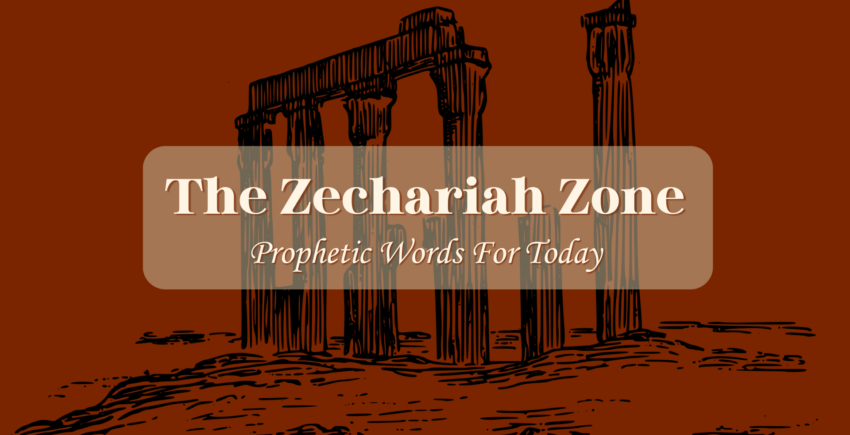
Suppose you had the 27 books of the New Testament spread out before you like a deck of cards, in no particular order. If you or I had been putting together the books of the New Testament, how would we have arranged them?
- We might have arranged them alphabetically—with Acts coming first, because it begins with A.
- Or we might have arranged them by author, putting together the Gospel of Luke and the book of Acts, since they were written by the same man.
- Or we might have arranged them chronologically, in the order in which they were written.
But I believe the Holy Spirit superintended the arrangement of the New Testament books. So it begins with Five Books of History—the four Gospels and the book of Acts.
- Matthew is most Hebrew of the prophets; he butts up against the Old Testament. He connects the story of Jesus with the Old Testament more than anyone else, as we see when we notice how he used the phrase: “…that it might be fulfilled…”
- Mark was connected with Peter…
- Luke was connected with Paul and was the most historically-oriented of the writers.
- John’s Gospel was written last and it’s the most theological of all of them. He helps us interpret and understand the details of the life of Christ.
- Then we have the book of Acts. The Gospels tell how the story began in Bethlehem and 30 years later ended in Jerusalem. Acts tells how the story began in Jerusalem and 30 years later ended in Rome.
And then we come to the letters or Epistles. There are two groups of these: The Pauline Epistles and the Non-Pauline Epistles. Pauline Epistles were written by Paul and named for the people or churches to whom they were addressed. The Non-Pauline Epistles (except for Hebrews) were named for their writers—Peter, James, John, and Jude.
The epistles were written to bring us to maturity in Christ. They were personal letters. The informality of personal correspondence is the way in which God chooses to relay to new Christians the information they needed to grow to maturity.
What is a mature Christian? A mature Christian and a mature church is one that displays the great virtues of Christ Himself—faith, hope, and love.
- 1 Corinthians 13:13
- Colossians 1:3-6: We have heard of your faith in Christ Jesus and of the love you have for all God’s people—the faith and love that spring from the hope stored up for you in Heaven.
- 1 Thessalonians 1:2-3: We remember before our God and Father your work produced by faith, your labor prompted by love, and your endurance inspired by hope in the Lord Jesus Christ.
Those are the three great themes that describe the maturity that we’re to develop as believers and as a church. And all the New Testament emphases all those themes, but I want you to notice how it unfolds.
Faith is the key thought in the 13 Pauline Letters and in Hebrews and James
If we had to take the letters of Paul and summarize them into one word, it would be faith.
The word “faith” occurs 42 times in Romans and 157 times in all of Paul’s writings. Perhaps the key thought that binds together all Paul’s thinking is in Romans 1:16-17: “I am not ashamed of the Gospel, because it is the power of God unto salvation for everyone who believes, to the Jew first and also to the Greek. For in the gospel the righteousness of God is revealed—a righteousness that is by faith from first to last, just as it is written, the just shall live by faith.
When we come to the book of Hebrews, the word “faith” occurs 43 times. In fact, we call Hebrews 11 the faith chapter of the Bible.
Then we come to James, and this brings to an end the “Faith” epistles. James warns us that the kind of faith that pleases God must be an action-oriented faith. James balances out Paul.
Just as Paul’s letters are all about faith; Peter’s letters are all about hope.
Peter is the apostle of hope. In 1 Peter, we’re told to have a hopeful, optimistic attitude even in the fact of suffering. First Peter begins with the words “Praise be to the God and Father of our Lord Jesus Christ! In his great mercy he has given us a new birth into a living hope through the resurrection of Jesus Christ from the dead.” Later he tells us to always be ready to give an answer to anyone who asks us a reason for the hope that is within us. Second Peter climaxes with a powerful chapter about the hope we have in Christ’s return.
And then we come to the letters of John, and he is the Apostle of love, and the word “love” occurs 54 times in these three letters.
There’s an old tradition about the apostle John, that when he was aged and near death—the last survivor of the original band of disciples—many people came to hear him preach. His favorite subject was love, and he often preached the contents of his first epistle, which deals so thoroughly with the love of God and the importance of loving one another. Finally someone in the audience cried out, “Brother John, we’ve heard all that before. Tell us something new.”
“Very well,” said the old apostle. “A new commandment I give to you—that you love one another.”
So we have faith as a great theme in Romans through Hebrews and James; hope as the great theme of Peter, and love as the theme of John’s Gospel. And that is the New Testament Trilateral for the Christian. We can rightly pray, Lord, give us the faith of Paul, the hope of Peter, and the love of John. Amen.
